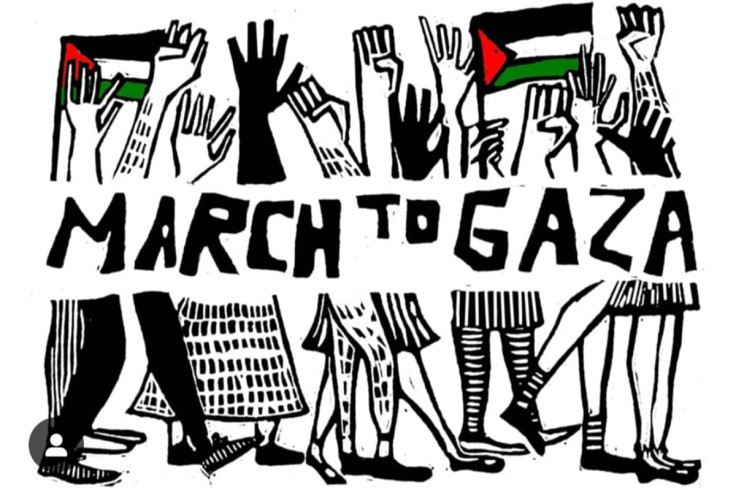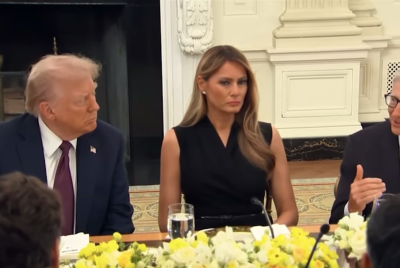What to Know About the 'Global March to Gaza' on 15 June: Purpose, Timeline and How to Join

KEY POINTS
- Thousands of activists from around the world converge on Egypt to walk in solidarity with Palestinians and call for open humanitarian access to Gaza
- The Global March to Gaza mobilises peaceful civilians demanding justice, dignity, and an end to the humanitarian blockade
- With over 4,000 registered participants, the international movement aims to pressure Egyptian authorities to allow aid into Gaza via the Rafah crossing
As the humanitarian crisis in Gaza intensifies, thousands of activists from around the world have joined a bold and unprecedented mobilisation: The Global March to Gaza. Participants have converged in Egypt on an attempt to peacefully march 48 kilometres from Al Arish to the Rafah border crossing, calling attention to the dire situation inside Gaza and urging global diplomatic intervention.
With more than 4,000 people from over 50 countries reported to have signed up, the march represents a rare show of international civilian solidarity in the face of restricted access, closed borders, and mounting political pressure. Egyptian authorities have already detained or deported dozens of participants, but the organisers remain undeterred. The march is planned to take place between 12 and 20 June, depending on border approvals and logistics.
For those interested in understanding, or even joining, the movement, here's everything you need to know as published in the official website marchtogaza.net
What is the Global March to Gaza?
The Global March to Gaza is a peaceful, citizen-led movement aiming to bring international attention to the humanitarian blockade on Gaza. It does not align with any political, religious, or ideological organisation. The march is civic, independent, and rooted in principles of justice, human dignity, and peace.
How long is the March?
Participants gather in Cairo on 12 June. On 13 June, they travel by bus to Al Arish, in Egypt's Sinai Peninsula, where the 48-km march begins. The walk toward the Rafah border crossing is expected to take two to three days. Upon arrival, participants plan to camp near Rafah until 19 June, conditions permitting. They return to Cairo on 20 June.
Who can join the march?
Absolutely everyone is welcome to participate, regardless of nationality, religion, background, or profession. The march prides itself on diversity and inclusivity.
How do I join the Global March to Gaza?
Step 1: Find your country's delegation on Telegram
Each participating country has its own Telegram channel where updates, coordination, and guidance are provided. If your country doesn't have one, you can join the International Telegram Channel for support.
Step 2: Register to join
Delegation Telegram channels include the link to register. The registration deadline was officially 7 June, though some delegations may still be coordinating last-minute entries.
Step 3: Secure your visa and flights
Once your registration is accepted, apply for an Egyptian e-visa and book your travel. If your country is not eligible for an e-visa and you haven't yet contacted your Egyptian embassy, you may not be able to secure the necessary documents in time.
What if I want to join but can't afford the travel?
Some delegations offer mutual aid support. Participants are encouraged to reach out via their country's Telegram group to inquire about funding options. However, the movement itself does not organise or distribute collective funds.
Who is financing the movement?
No one. The Global March to Gaza is entirely self-funded. Each participant covers their own expenses. The organisers do not accept donations and discourage third-party fundraising. Individuals are encouraged to support fellow participants they know personally.
What happens if participants are stopped at the border?
Organisers have taken diplomatic and legal precautions to minimise disruptions. An international legal team is monitoring developments and providing guidance. In the event that marchers are blocked or detained, organisers hope the visibility and peaceful nature of the movement will generate international pressure on Egyptian and other authorities.
Is the goal to forcibly enter Gaza?
Absolutely not. The movement has clearly stated that it will not attempt to force any barriers or cross borders illegally. The aim is to peacefully reach Rafah and negotiate humanitarian access in partnership with NGOs, diplomats, and legal advocates.
Is this a political movement?
No. The march is apolitical and does not represent any party or government. It is a civic initiative born out of humanitarian concern and guided by the principles of peace and nonviolence.
Why Rafah?
Rafah is currently the only crossing point between Egypt and Gaza. It has become a critical bottleneck for aid and humanitarian relief. The march's symbolic endpoint is a direct call for the opening of the border to allow medical, food, and logistical assistance to reach civilians inside Gaza.
How long will participants stay near the border?
If allowed, marchers plan to stay in Rafah from 15 to 19 June. This will depend entirely on whether Egyptian authorities grant permission. The stay is intended to include peaceful camping, media engagement, and solidarity actions.
What impact do organisers hope the march will have?
Organisers believe that thousands of peaceful, visible citizens mobilising in one of the region's most restricted areas will force global governments, particularly Egypt and its allies, to take humanitarian responsibility seriously. They aim to increase pressure for sustained border access and long-term solutions in Gaza.
For more updates or to follow the progress of the march, visit marchtogaza.net or check the campaign's Telegram channels and Instagram accounts for real-time updates.
© Copyright IBTimes 2025. All rights reserved.





















